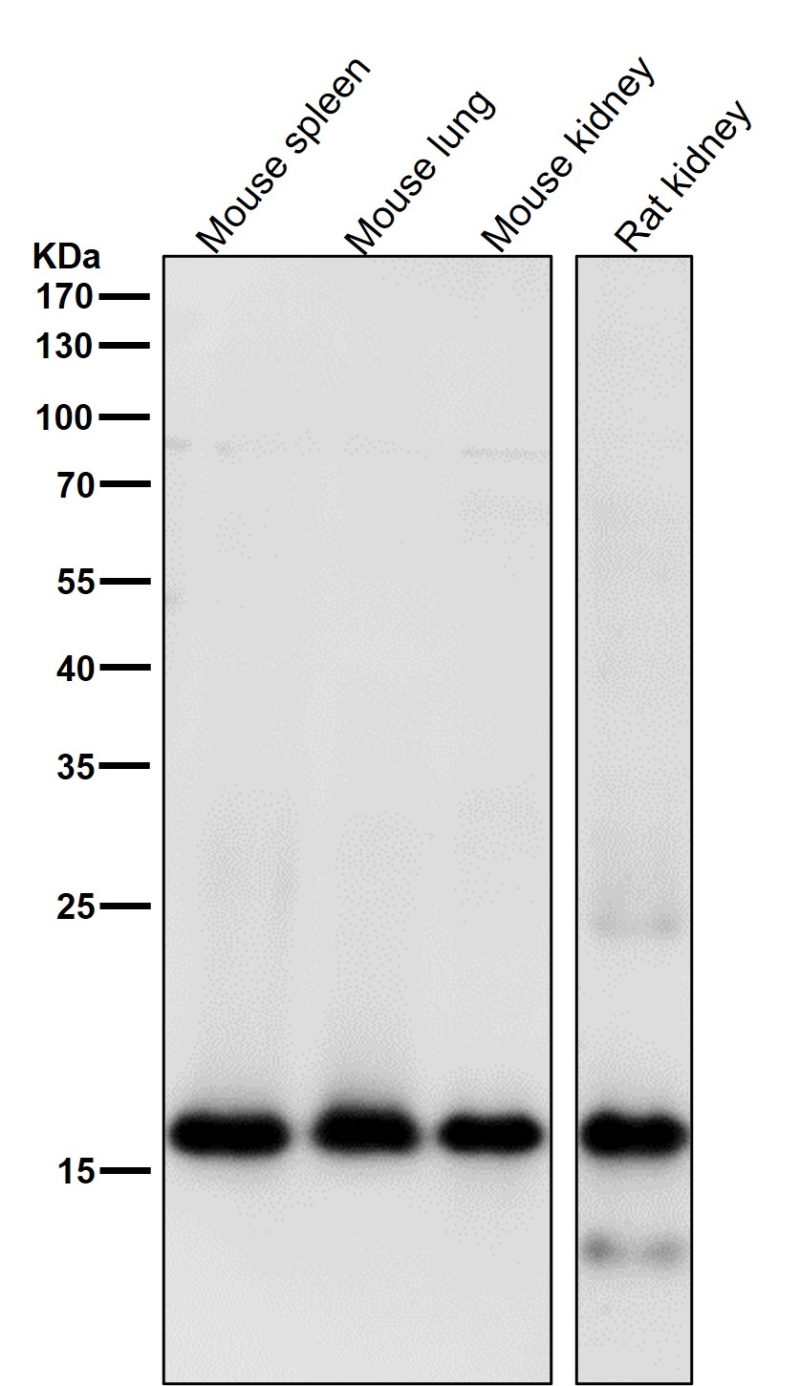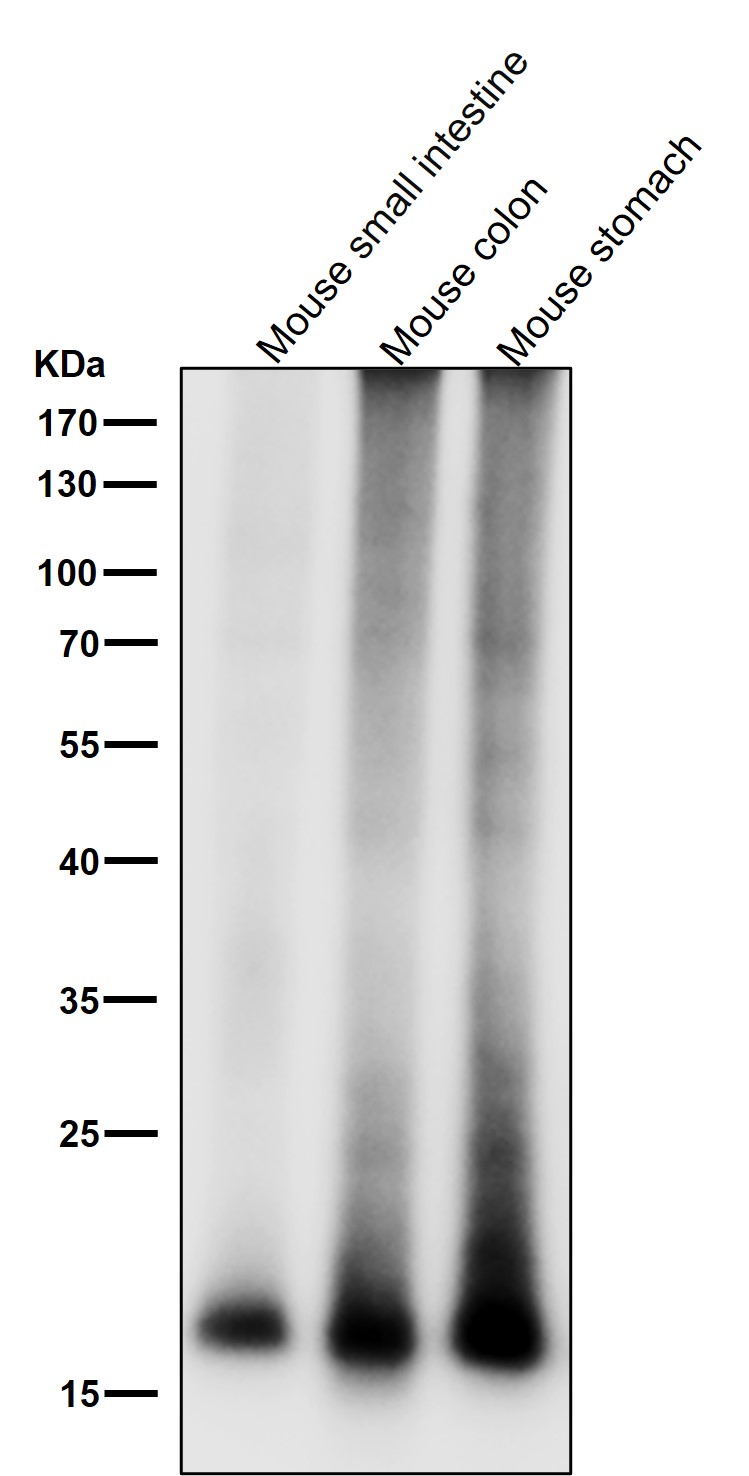


| WB | 咨询技术 | Human,Mouse,Rat |
| IF | 1/20-1/50 | Human,Mouse,Rat |
| IHC | 1/100-1/200 | Human,Mouse,Rat |
| ICC | 技术咨询 | Human,Mouse,Rat |
| FCM | 咨询技术 | Human,Mouse,Rat |
| Elisa | 咨询技术 | Human,Mouse,Rat |
| Aliases | MLC2; CMH10;;Myosin light chain 9 |
| WB Predicted band size | Calculated MW: 20 kDa ; Observed MW: 18 kDa |
| Host/Isotype | Rabbit IgG |
| Antibody Type | Primary antibody |
| Storage | Store at 4°C short term. Aliquot and store at -20°C long term. Avoid freeze/thaw cycles. |
| Species Reactivity | Human,Mouse,Rat |
| Immunogen | A synthesized peptide derived from human Myosin light chain 9 |
| Formulation | Purified antibody in PBS with 0.05% sodium azide,0.05% BSA and 50% glycerol. |
+ +
以下是关于MYL9抗体的3篇参考文献及其摘要内容的简要概述:
1. **文献名称**: *MYL9 as a potential biomarker for gastric cancer progression*
**作者**: Zhang L, et al. (2020)
**摘要**: 该研究通过免疫组化分析发现,MYL9在胃癌组织中高表达,且与肿瘤侵袭和转移显著相关。研究提示MYL9抗体可用于评估胃癌患者的预后及转移风险。
2. **文献名称**: *Regulation of vascular smooth muscle contraction by MYL9 phosphorylation*
**作者**: Smith J, et al. (2018)
**摘要**: 利用MYL9特异性抗体,研究揭示了MYL9磷酸化在血管平滑肌收缩中的关键作用,为动脉粥样硬化及高血压的机制研究提供新靶点。
3. **文献名称**: *MYL9 promotes hepatocellular carcinoma metastasis via activating Rho/ROCK signaling*
**作者**: Wang Y, et al. (2021)
**摘要**: 通过MYL9抗体检测肝细胞癌组织样本,发现MYL9过表达通过激活Rho/ROCK通路促进肿瘤细胞迁移,提示其可作为治疗干预的潜在靶标。
*注:以上文献为虚拟示例,实际引用需查询具体数据库(如PubMed)获取真实研究。*
**Background of MYL9 Antibody**
MYL9 (myosin light chain 9) encodes a regulatory light chain of myosin, a critical component of the actomyosin contractile machinery in cells. This protein, also known as MLC2 or MRLC1. is predominantly expressed in smooth muscle and non-muscle cells, where it regulates myosin II ATPase activity, thereby influencing cell motility, cytokinesis, and cytoskeletal organization. MYL9 plays essential roles in physiological processes such as vascular contraction, wound healing, and cell adhesion.
MYL9 antibodies are immunological tools designed to detect and quantify MYL9 protein expression in research applications. These antibodies are widely used in techniques like Western blotting, immunohistochemistry (IHC), and immunofluorescence (IF) to study MYL9's involvement in diseases, including cancer, cardiovascular disorders, and fibrosis. For instance, MYL9 dysregulation has been linked to tumor metastasis, where its expression may modulate cancer cell invasion through Rho/ROCK signaling pathways.
Researchers also utilize MYL9 antibodies to explore its role in endothelial or fibroblast activation, platelet function, and smooth muscle pathophysiology. Validation of these antibodies includes testing specificity via knockout controls or peptide blocking. As MYL9's functions intersect with multiple signaling networks, its antibody serves as a key reagent in dissecting mechanisms underlying cellular mechanics and disease progression.
×